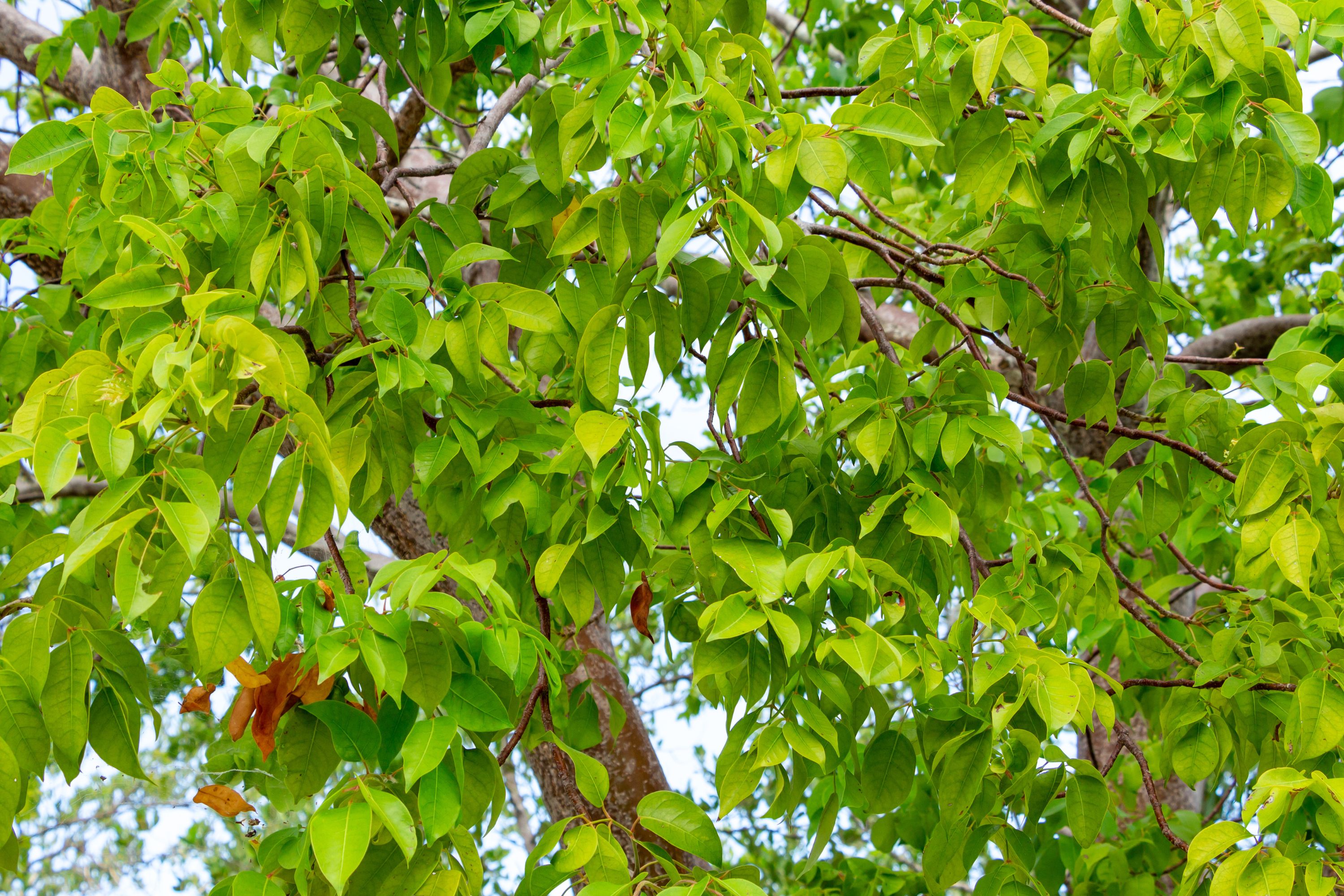Turpentine tree
(Bursera simaruba)

Description
Bursera simaruba, commonly known as gumbo-limbo, copperwood, chaca, West Indian birch, naked Indian and turpentine tree, is a tree species in the family Burseraceae, native to tropical regions of the Americas from South Florida to Mexico and the Caribbean to Brazil, Jinotega and Venezuela. Bursera simaruba is prevalent in the Petenes mangroves ecoregion of the Yucatán, where it is a subdominant plant species to mangroves. Bursera simaruba is a small to medium-sized tree growing to 30 meters tall, with a diameter of one meter or less at 1.5 meters above ground. The bark is shiny dark red, and the leaves are spirally arranged and pinnate with 7-11 leaflets, each leaflet broad ovate, 4–10 cm long and 2–5 cm broad. The gumbo-limbo is comically referred to as the tourist tree because the tree's bark is red and peeling, like the skin of sunburnt tourists, who are a common sight in the plant's range. The tree yields some ripe fruit year-round, but the main fruiting season is March and April in the northern part of the plant's range. The fruit is a small three-valved capsule encasing a single seed which is covered in a red fatty aril (seedcoat) of 5–6 mm diameter. Both ripe and unripe fruits are borne quite loosely on their stems and can spontaneously detach if the tree is shaken. Ripe capsules dehisce or are cracked open by birds. Birds also seek out the fruit to feed on the aril, which, though small, is rich in lipids (about half its dry weight).
Taxonomic tree:







